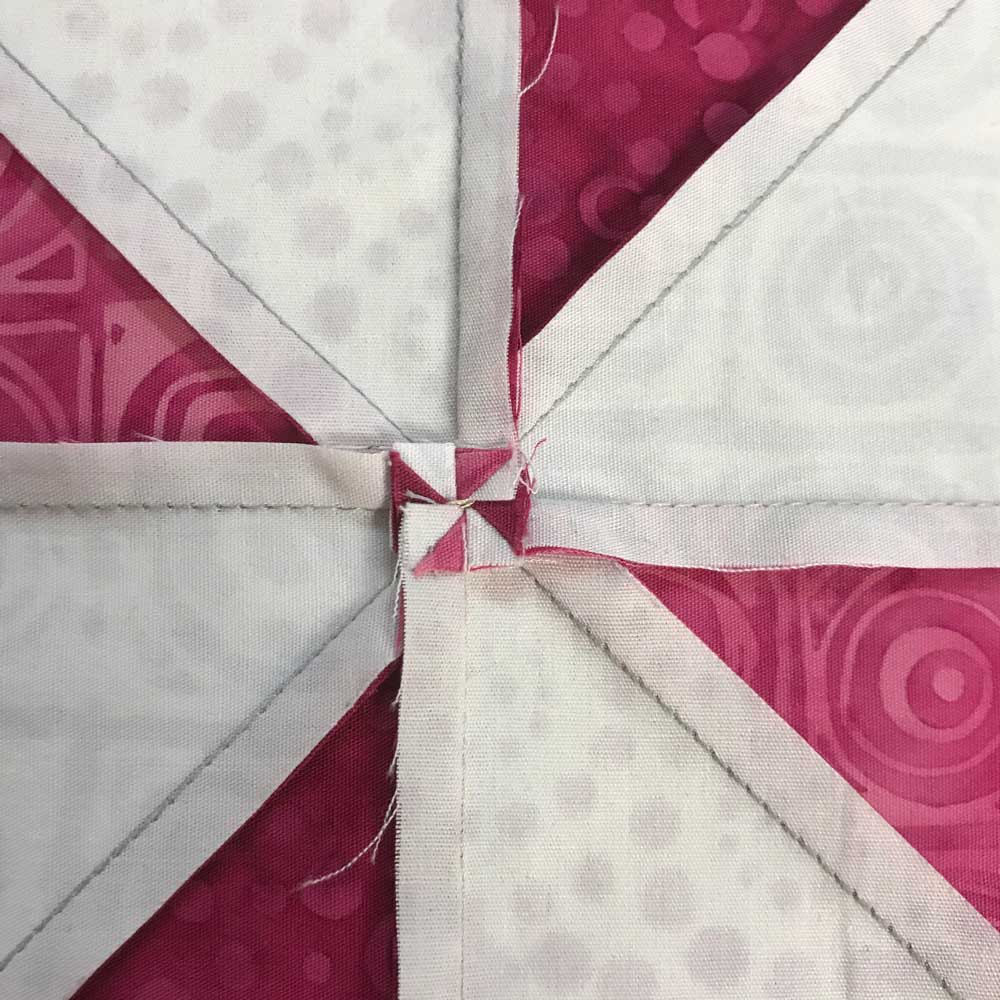March 2022
Covering Quilts
Quilters, press on – Pressing matters!
by Sandra Starley
It may sound silly to newcomers, but pressing in quilting is serious business. Note that I say pressing rather than ironing, and no, they are not the same thing. Quilters’ families with piles of wrinkly clothes know that quilters like to press fabric and quilt blocks but are generally not inclined to iron. So what is the difference, and does it really matter? Pressing and ironing are two separate things, and yes, it really does matter. But first a bit of clarification of terminology since an “iron” is both a noun — the heated metal object — as well as a verb signifying the action of moving that object to “iron” a shirt. So, the iron-y is, you still need to use an iron to press.
Pressing Versus Ironing?
Pressing, as the name implies, is pressing or placing the iron on a piece of fabric or a quilt block and then lifting the iron and replacing it on another section of the fabric. Ironing is actively sliding the iron back and forth across the fabric. For precise patchwork, lift, place and press your iron rather than slide the iron. Pressing keeps fabric grain and blocks stable, while ironing can distort fabric grain and make your blocks and seams wonky. You should never attack your blocks with an iron or iron in a random manner. In fact, serious quilters plan their seams and include pressing instructions in their patterns.
Closed Versus Open Seams?
Pressing to the Dark Side?
The next big question is, should you press your block seams together to the side or open? As a general rule and for stability, it is good to press your seam allowances to one side. But first, it is a good practice to set your patchwork seams by pressing the sewn piece right sides together, then open the piece and press to the side. Which side? Generally, press toward the darker of the two fabrics. This helps prevent dark fabric from shadowing or showing through the light fabric. Some seams will need to be pressed to the light side. If so, check the seam and trim the dark if it is shadowing.
Side pressing often allows patchwork seams to nest or abut each other for more precise piecing. When multiple seams come together you may need to twist the intersecting seams open so they can lie flat (see photo). It is so fun to see a little pinwheel appear when you loosen the seam. Pressing to one side makes it easier to avoid sewing through seams when hand or machine quilting, especially stitch in the ditch. However, if there are a lot of seams and intersections in your top, you may need to press the major or long seams open so the quilt will lie flat. And if you will be machine quilting in an overall or free-motion design, open seams will make the process easier.

Back of a pieced pinwheel block
The back of a pieced pinwheel block. The seams are pressed to the dark side with the center twisted open to lie flat. (Image courtesy of the author)
To Steam or Not To Steam?
Some quilters love hot, steamy irons, and others dislike them. I tend to avoid steam unless I have bulky seams I need to subdue, and then it comes in handy. Starch or other pressing or flattening mediums are another personal preference. Some quilters use starch by the gallon, and others don’t like it. I tend to use it only for stubborn wrinkles or bulky seams. As with most things quilty, test and try out a variety of techniques until you find what works best for you.
Press on! And don’t forget the most important thing is to have fun.
Sandra Starley is nationally certified quilt appraiser, quilt historian, and avid antique quilt collector. She travels throughout the U.S. presenting talks on antique quilt history, fabric dating classes and trunk shows as well as quilting classes. Learn more at utahquiltappraiser.blogspot.com. Send your comments and quilt questions to SandraStarley@outlook.com

